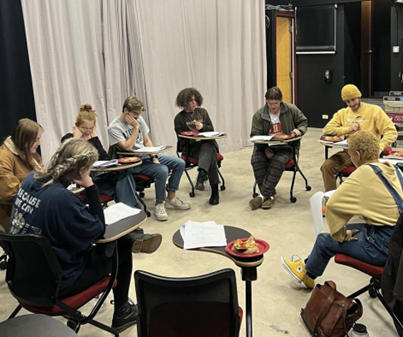Typically, when we read a mystery book, it’s a fast paced adventure chock-full of fiery characters, unnerving crimes, constant action and the thrilling “AHA!” moment when you know beyond a doubt who the dangerous criminal is because everything makes sense. However, “The Cuckoo’s Calling” by Robert Galbraith met only one of those criterions: the unnerving crimes.
The story’s central character is a roughly edged man named Cormoran Strike who is attempting to make a living as a Private Investigator after losing his leg to a landmine in Afghanistan. Unfortunately, he is struggling to pull in clients, is in debt, has just broken up with a long time girlfriend and is living out of his office. It sounds like there is nowhere for him to go but up. We also meet Robin Ellacott, a young woman who becomes a temporary secretary for Strike’s failing office. She is intrigued by Strike’s obviously difficult personal life as well as the mystery behind the case that soon falls into Strike’s sphere.
The case comes from wealthy lawyer John Bristow is in apparent agony over the recent death of his sister, model Lula Landry, who fell to her death in a supposed suicide (we can see where this is going.) Bristow is convinced that Lula’s death wasn’t an accident. Despite his misgivings at what logically seems a suicide, Strike agrees to investigate the case when Bristow waves a hefty sum of money as desperate payment.
At this point, we could put the book down and decide to leave it on the shelf for a while. Luckily, the lure of a coffee and a peacefully sunny day encourage our will to keep reading, because what good is a book if it is left unfinished?
As the story progresses, we become more and more drawn in by the characters. Strike, Robin and Bristow continually reveal layers of themselves. Additional characters are introduced, and the levels of diversity are captivating, as each person is proudly unique and creatively rounded. No two characters are anything alike, and because each holds an element of individual intrigue, it is simple to separate them and identify their role.
Galbraith’s writing is laden with adjectives and a constant sense of calm. He has a clever tendency of noting a detail in an offhand manner to make it seem unimportant. This could be the first clue that we aren’t yet paying enough attention and that we might be waiting for large clues to be clearly noted by Strike before puzzling out the unsolved mystery. But, by the time we figure out that the explicit warning signs aren’t going to be given, we are almost done with the book and largely behind on combining the puzzle pieces.
We are left to be completely shocked by the “AHA!” reveal. The level of attention that went into crafting the brutally intricate timeline and well placed detail deserves quality compliments. This book does not race, but instead builds. It feels like hiking; it starts out easy, with a small incline, but steadily grows more difficult until all of sudden it’s like stepping over a giant boulder to reach the top and gaze upon the ground below. So when you read this puzzle, do yourself a favor and pay attention to those details, and maybe you won’t be as surprised as the rest of us.
Finally, to those who may still need convincing, you should know that Robert Galbraith is a pseudonym for the actual author: JK Rowling.











